The National Galleria is full of paintings categorized and organized by era. It is located at Trafalgar Square. It sits overlooking the square's two massive fountains in the direction of Ben Big. The museum is funded by donations and extra donations for the audio tour. Going up the stairs leads to the entrance of four categories of paintings organized by era. The entrances to the exhibits are arranged in chronological order from left to right. Cameras are not allowed in any of the facilities so I only have outside pictures. The most interesting piece of artwork was "The Ambassadors" which shows a distorted skull on the bottom which takes shape when viewed from the right side almost adjacent to the painting. There is much debate over the symbolism of why the artist chose to put a skull on the bottom on the painting. Rather than bore you with the details of that, I will suggest my interpretation: The artist decided to paint that skull in order to flaunt his mad skill and make the painting much more interesting than the original subjects that he was commissioned to paint.
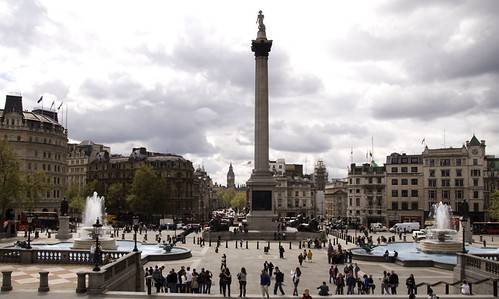
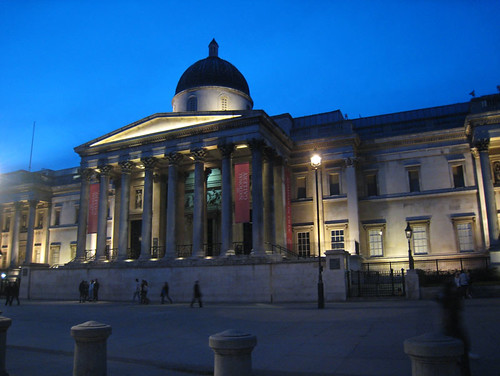
Between visiting the National Galleria and going to the Tate Modern, we venture through Green Park for a brief intermission, towards the direction of Buckingham Palace. On the journey over we run into some Queen's Guards out performing in the courtyard.
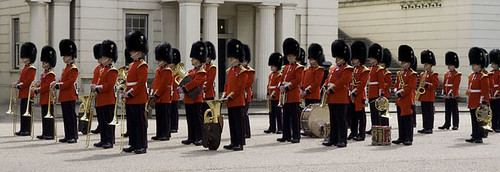
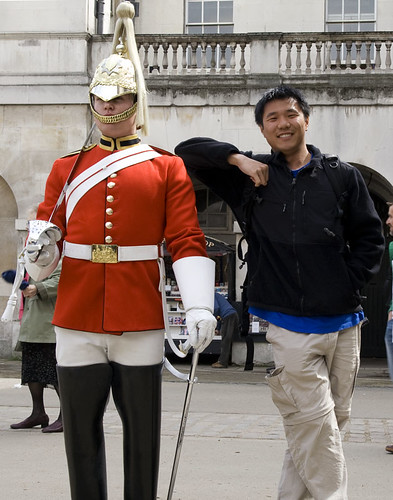
Green Park has a walking trial that runs around a pond. In the middle is Duck Island. As we walk past the pond there are several groups of ducks and swans. At the end of the lake Buckingham Palace begins to emerge in the distance.
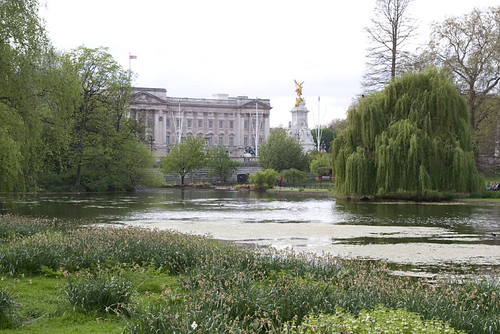
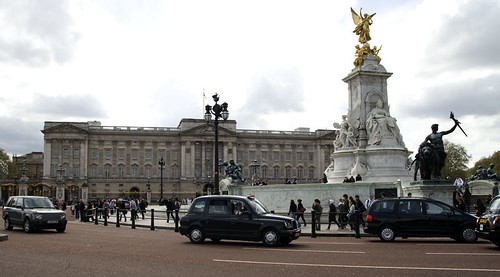
The Tate Modern is located on the south side of the Thames River between the Blackfriar's Bridge and the Millennium Bridge. I decided to take the tube to the Southwark station. After emerging from the underground, our views are drawn to the bright orange light poles that mark the direction to the Tate Modern. About a ten minute walk winding through narrow streets busy with construction, the Tate Modern appears. It was built from an old power station. The entrance is what is called the turbine hall which is overlooked by all 7 floors of artwork.
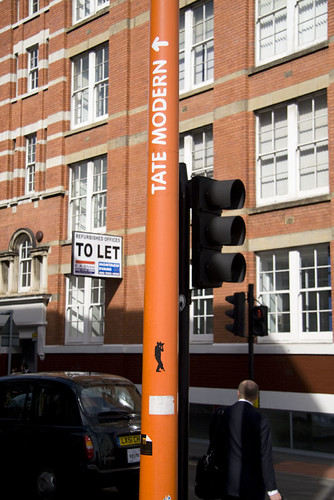
One of the main attractions of the Tate Modern is Claude Monet. They have Monet's Water-Lilies painted after 1916. The Tate Modern also has many up and coming artists. The only floor that was not included as a free exhibit was Duchamp. He gets his fame from taking a urinal, flipping it upside down, signing his name on it and calling it art. Same logic applied, I make art every morning I go into the restroom. Needless to say I was not disappointed that I did not get to see his "artwork". With the day coming to an end around 5:45pm, I decide to save the British Museum for the next day.
The British Museum is located near our first hostel, The Generator. It surrounded by the four tube stops, Goodge Street, Russell Square, Tottenham Court Rd, and Holborn. Having just visited Camden Town, which is directly north of that area, I decided to take a walk from Euston Station south via Gower Street. I pass through the London University College on my way to the Museum. A rush of bike traffic hurries through the side streets between classes. There are hordes of students out walking around. I finally reach the Museum on the left after side-stepping past flocks of ipod wearing students.
Another left and I am facing the entrance of the British Museum. It is definitely a tourist hotspot as several groups of people claim the limited real estate in front of the entrance to pose for pictures. The museum itself is huge. Two rolls of ionic columns form the foundation to a triangular roof. Inside the top triangle are several statues with gold plated details. The concrete is weathered and the darked aged details are more striking against the light gray.

The doorway opens up to a spacious atrium where a network of triangular glass panels form the roof. The first thing you'll notice is how white the entire area is. It further enhanced by the large windowed roof which lets in ample amounts of light. Large white tiles make up the floor and walls. Directly in front are two sets of steps that curve oppositely around the middle structure leading to various exhibits.
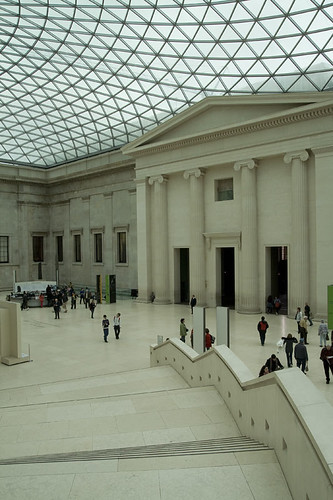
The British Museum is huge in comparison to the other I have visited. Besides being bigger and better, there are no photography restrictions. A 4gig card was not enough to capture all the interesting items that this institute had to offer. Housing over 13 million items, the British Museum is one of the largest exhibits in the world. It contains objects from all continents and is themed on human culture and history. It is easy to get lost amongst the many exhibits and still not see the same thing twice. I spent most of my time in the Egyptian and Asian exhibits. And below are some of my favorites.
A Crocodile Suite was displayed behind glass and the lighting made it difficult to get a picture. This item was featured in the Egyptian area. This armor, although non-functional as protection, was worn by the Egyptian military in third to fourth century AD. The Egyptians have strong belief in the power of the Nile Crocodile and the Crocodile god, Sobek. This armor was believed to give the wearer the strength and power of the Crocodile and acted more as a mental stimulus striking fear to their enemies.

Nesuke are miniature sculptures from 17th century Japan. These tiny, roughly the size of a lime or small orange, figurines were once used as part of traditional Japanese attire. A Netsuke acted as a button to hold various containers or pouches, as in those days the robes had no pockets. They are now a rarity as that clothing trend came to an end. It is truly amazing the amount of detail the artists are able to put into these small items. The material used ranges from common woods to rare animal tusks.
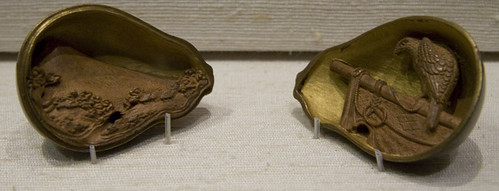

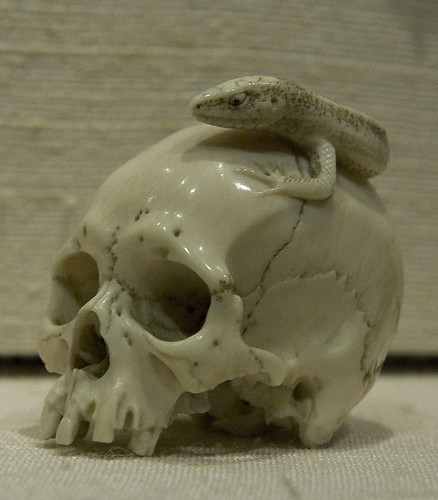
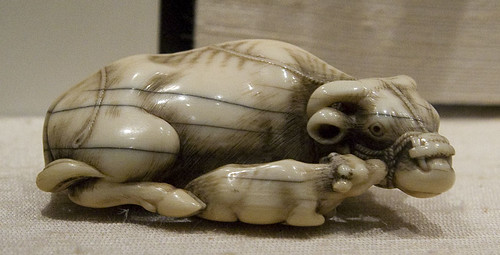
The pictures are looking good!
ReplyDelete